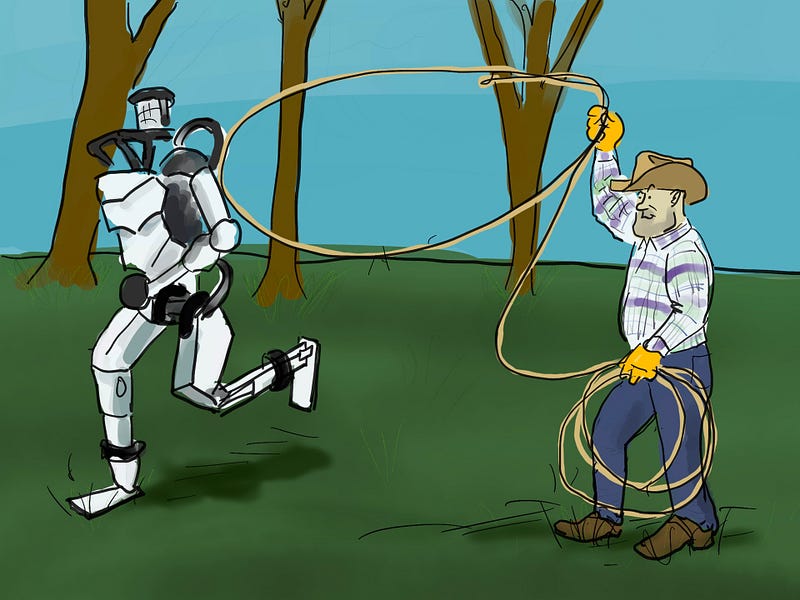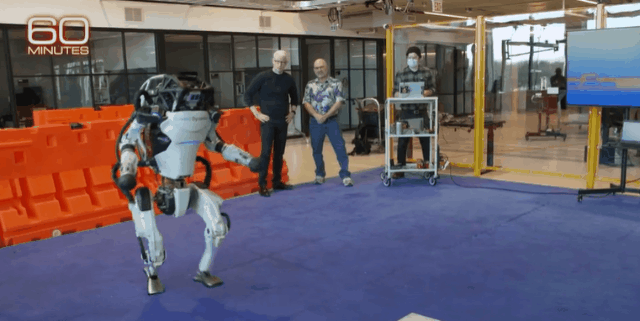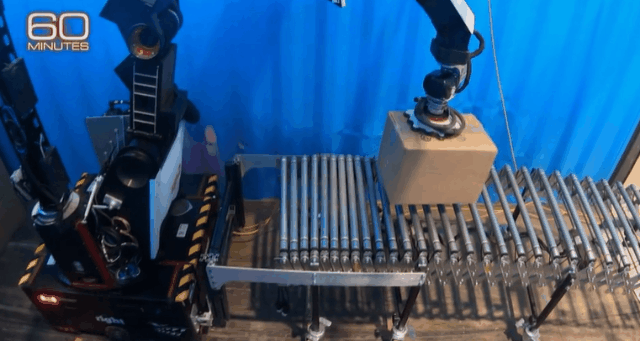The Future of Work: Becoming a Robot Wrangler Amid Automation
Written on
Chapter 1: The Rise of the Robot Wrangler
As technology advances, the concept of a "robot wrangler" is becoming increasingly relevant. While robots that can perform impressive physical feats are fascinating, the more immediate concern lies with practical automation in industries. One notable example is Boston Dynamics' latest innovation, Stretch.

Boston Dynamics, renowned for its cutting-edge robotics, recently showcased Stretch during a segment on 60 Minutes. This presentation highlighted the company's pioneering work in creating humanoid and animal-like robots.

Stretch, a significant departure from previous designs, is engineered explicitly for warehouse tasks. Unlike its predecessors, it lacks a traditional body or legs, featuring instead a large, mobile platform with a 7-foot extendable arm. This robot is designed to enhance productivity, capable of moving up to 800 boxes each hour and operating for up to 16 hours daily without breaks.
At this point, many warehouse workers may have felt a wave of anxiety.

Manufacturing remains one of the largest employment sectors in the U.S., with around 12 million people employed in factory and warehouse roles. However, this sector has long faced the threat of automation. Companies like Amazon have integrated over 200,000 robots into their operations, while robots have been utilized in the automotive industry for decades.
Despite the automation trend, some tasks still require human dexterity. For instance, when Tesla's CEO, Elon Musk, attempted to fully automate Model 3 production, he discovered that over-reliance on robots hindered efficiency, prompting a reassessment of the approach.
Working in a warehouse involves different skills, and Stretch's capabilities allow it to handle many of these tasks autonomously, needing only minimal human oversight.
The first video, "Want to be a robot wrangler?" explores the emerging role of individuals who manage robots like Stretch, highlighting the changing landscape of work.
As the automation wave surges forward, it raises pressing questions about job displacement. When asked about potential job losses, Boston Dynamics CEO Robert Playter introduced the term "Robot Wrangler." In his view, one person could oversee a team of up to 50 robots, blending roles that once required multiple human workers.
This role will likely involve monitoring robots' activities and troubleshooting issues via a computer interface—a stark contrast to the physical demands of traditional warehouse jobs. While the title conjures images of rugged cowboys, the reality will be more sedentary.
Although being a Robot Wrangler might seem appealing, the implications for displaced workers are concerning. If Stretch replaces numerous warehouse positions, the math doesn't favor those losing their jobs, as only a handful of Robot Wranglers would be needed.
The potential for millions of workers to be displaced by 2030 necessitates a robust response from policymakers. A strategic plan is essential to transition the workforce away from repetitive tasks, which should also encompass educational reform.
Chapter 2: Rethinking Education and Workforce Training
The second video, "How To Defeat Any Robot," provides insights into how to adapt to the automation landscape, emphasizing the need for new skills and training.
To prepare for a future where manual labor jobs may be largely automated, the American education system must evolve. Initiatives should begin in middle school, encouraging students to consider career paths earlier and integrating technical training throughout high school.
The reality is, as robots become capable of performing many tasks, not everyone can transition into the role of a Robot Wrangler. The challenge ahead is significant, and it demands a concerted effort from all sectors to ensure a smoother transition into this new era of work.